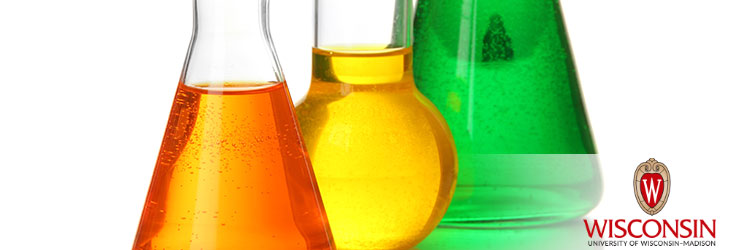Materials & Chemicals

Stimuli-Responsive Smart Block Copolymers Improve Dispersion of Titanium Dioxide in Architectural Coatings
WiSys: T200004US02
Inventors: Elizabeth Glogowski
WiSys is currently seeking strategic partners in the coatings industry that are interested in co-development opportunities that would ultimately provide a route to market for commercialization of these novel copolymers.
Overview
Smart coatings are responsive to external or environmental factors like temperature with an engineered and predictable effect. This technology focuses on stimuli-responsive block copolymer additives to architectural coatings, which use titanium dioxide (TiO2) to provide opacity and the base pigment to coatings like paint, primers, and stains. However, due to its tendency to aggregate, excess amounts of TiO2 are often needed to achieve the same opacity, thereby increasing overall cost. In addition, the toxicological effects of the material in humans and the environment continue to be studied. As such, there is a growing need for the development of technologies like the one described here that provide for improved dispersion of TiO2 particles with a reduction in its use and can be adaptable or tuned for specific uses or environments.
The Invention
An associate professor of materials science and engineering at the University of Wisconsin-Eau Claire has synthesized a series of stimuli-responsive block copolymer dispersants optimized for use in architectural coating applications. These novel polymer dispersants are currently being developed as additives to existing coatings for improved dispersion of TiO2. Dispersant properties are tunable through modification of the polymer composition as a function of pH and temperature. Initial data shows that the addition of these polymers can decrease settling rate, control viscosity, and control interfacial activity, all of which are important for greater dispersant effectiveness and stability over time. These polymers have demonstrated the ability to interface with pigment particles, such as TiO2, resulting in improved dispersion of the pigment. Initial testing shows reduced TiO2 concentration while maintaining zero shear viscosity and shear thinning properties, which prevents drips in the coatings, and is comparable to commercially available formations. These properties are tunable and may be altered to tailor the product for a desired use or environment, or to readjust the properties of an aged existing product. New methods of synthesis to allow for the scaled-up production of these polymer additives are complete and new purification methods are in progress. Further development will also focus on maintaining additional properties like coverage and opacity, and testing of additional polymer compositions and particle surface coatings.
Applications
This technology targets enhancements to existing architectural coatings, such as interior house paints and deck stains. These copolymers can also enable the creation of new products, including one-coat-hide and paint-and-primer-in-one.
Key Benefits
The smart block copolymers tested to date improve dispersion of TiO2 and the viscosity profile of the architectural coatings reducing concentrations and the cost of manufacture, and the environmental impact. This polymer additive technology provides tunable changes that can result in greater stability while maintaining zero shear viscosity and shear thinning behavior comparable to commercially available formulations.
Stage of Development
New polymer dispersants are currently being developed as additives to existing coatings for improved dispersion of TiO2. Dispersant properties are tunable through modification of the polymer composition as a function of pH and temperature. Initial data shows that these polymer additives can decrease settling rate, control viscosity, and control interfacial activity, all of which are important for greater dispersant effectiveness and stability over time. These polymers have demonstrated the ability to interface with pigment particles, such as TiO2, resulting in improved dispersion of the pigment. Initial testing shows reduced TiO2 concentration while maintaining zero shear viscosity and shear thinning properties, which prevents drips in the coatings, and is comparable to commercially available formations.
Tech Fields
For current licensing status, please contact Margot DeBaker at [javascript protected email address] or (608) 729-7378